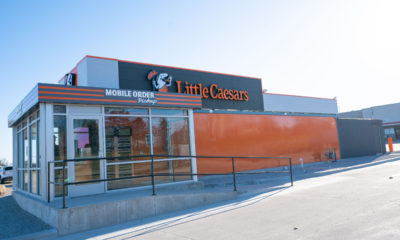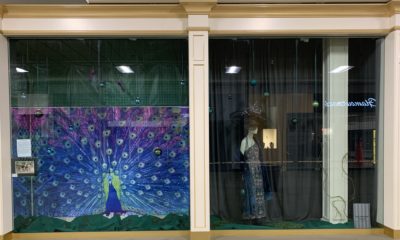WITH A RENEWED SENSE of autonomy, women are embracing their financial strength and reshaping the retail landscape in unprecedented ways. The shift in consumer behavior, the changing notion of community, and the significant influence of female celebrities like Beyoncé, Taylor Swift, and even the iconic Barbie have all played a critical role in this new era.
The Rise of Bold Spending
Today, women are better positioned than ever to flex their financial muscles. A record number of women have rejoined the U.S. labor force, surpassing pre-pandemic levels. Moreover, the unemployment rate among women has plummeted to an all-time low of 3.4 percent, according to Deloitte. These statistics point to a significant shift in the dynamics of the workforce and, consequently, consumer behavior.
But it’s not just about spending: It’s about empowerment. Women, who are 16 percent more likely than men to save for future expenses — and have often been cautious in their financial decisions — are now embracing a sense of freedom akin to what men have traditionally experienced. It’s true, “girls just wanna have fun,” but they also want to spend boldly! In the wake of adversity, the power of the female dollar has emerged as a force to be reckoned with. Despite the data showing that women generally earn less than men, an analysis by LendingTree shows that single women own 2.46 million more homes than single men.
And we can’t talk big-ticket items without inviting Taylor Swift and Beyoncé to the party. Swifties treated themselves by spending an average of $1327 to attend an Eras tour concert, that’s around $400 more than they initially budgeted for, including tickets, outfits, travel, merch and food.
If anyone doubted whether the “Beyoncé Bump” was real or not, Yelp’s Local Economic Report outlined the impact of Queen Bey’s Philadelphia Renaissance performance, which included everything from a 21 percent increase in hotel searches to a 30 percent rise in diners seated via Yelp.
Of course, it’s not all big-ticket items. Women are also in the majority when it comes to treating themselves to smaller purchases, like a cup of coffee, a new beauty product, or a cocktail at happy hour. In a world where not much can be controlled, consumers can control how and where they spend their money. At this moment, there’s a celebration of gained autonomy and a declaration of financial strength. Ultimately, there’s more opportunity for retailers to gain the attention of the female dollar, and brands who view this as just a passing consumer “trend” will miss out on building a larger community of loyal shoppers.
Advertisement
A Triad of Celebration, Community and Experiences
Retail isn’t just about transactions anymore — it’s about creating moments of celebration and fostering community. Brands are forging partnerships to craft unique experiences that evolve and resonate emotionally. This shift signifies more than a mere purchase – it’s an investment in memories and connections.
Brands are evolving from transactional entities to emotional connectors. This transformation culminates in shared experiences, both in store and online, where consumers find common ground with each other and establish emotional bonds with the brands they support.
Traditional communities are often bound by geographical proximity yet the digital age provides new and often more convenient avenues. Social media acts as a gateway to shared experiences and niche interests, forging connections that transcend borders.
While we’re seeing more brands take lighthearted approaches to resonate short-term with women (see Popeyes’ clever response to the viral “girl dinner” trend), most noteworthy is how the retail landscape is changing as a whole. In order to cut through all the noise, retailers must celebrate the unique interests of their customers and facilitate connections among like-minded individuals.
Take Ripped Bodice, a bookstore that only sells romance novels, with locations in both Brooklyn and Los Angeles. While female-forward shops like this may initially appear niche, they speak to a more significant cultural shift. Women crave opportunities to embrace their interests without shame and be unapologetically themselves. “I think that has to do in general with a better societal understanding of how misogyny and sexism was impacting that shame,” Ripped Bodice co-owner Leah Koch stated in an Observer article.
Breaking the Mold: Embracing Inclusivity
Icons like Barbie, Taylor Swift and Beyoncé are shattering traditional molds and fueling the rise of inclusivity. Women seek authenticity, not conformity, wanting to be recognized for their individuality rather than confined to predefined roles. Brands that create space for women to express their true selves and form authentic connections are at the forefront of this transformative shift.
Advertisement
Understanding the modern female consumer is crucial for brands seeking to capture her attention. The changing dynamics of her preferences and aspirations warrant a closer look. Dive into the statistics to discern what she’s vibing with, and tailor your offerings to resonate with her.
The modern female consumer is a multi-faceted entity. Her motivations, fears and spending habits are intricate and unique. To successfully appeal to her, brands must delve deeper, challenging assumptions and embracing the ever-evolving nature of her preferences. It’s imperative to understand what it means to be a modern woman – there isn’t just one type of individual or identity — the modern woman is diverse and there isn’t a one-size-fits-all approach.
A Future Beyond Trends
Considering how this movement can extend beyond the current moment is critical. When Barbie is no longer in theaters, and T-Swift has wrapped up her Eras tour, then what? The question arises: Will the female dollar no longer pack as strong of a punch? This is not merely a passing trend – it’s a transformative shift in consumer behavior. To craft strategies that encourage lasting connections, it’s paramount that brands understand and embrace the aforementioned motivations driving this movement.
In this era of bold spending, shopping is no longer just a transactional experience, it’s about creating moments and connections that resonate emotionally. Women are claiming their financial autonomy and embracing new ways of spending that emphasize celebration, community, and experience. More than ever, brands have an opportunity now to deliver and help consumers be bolder and foster connections.
With all this said, retailers must think bigger than how they historically have. It’s about understanding how to cultivate community and connection authentically and understanding what your customers want. While we’re seeing an uptick in the investment of things deemed traditionally “female,” there are so many more untapped opportunities for brands. The recognition of the universal power of the female dollar is just the first step. The lack of real investment and understanding of what underrepresented communities actually want from brands proves that there is more work to be done.

 Headlines1 week ago
Headlines1 week ago
 Headlines7 days ago
Headlines7 days ago
 Headlines1 week ago
Headlines1 week ago
 Designer Dozen2 weeks ago
Designer Dozen2 weeks ago
 Headlines2 weeks ago
Headlines2 weeks ago
 Headlines5 days ago
Headlines5 days ago
 Headlines2 weeks ago
Headlines2 weeks ago




















